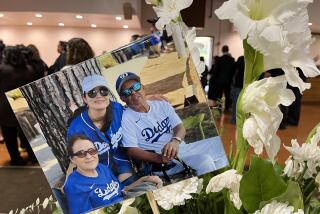Comiskey Recalled: a Field of Dreams
CHICAGO — It was like a green adventureland. A field of green grass, green seats, green stands.
An awesome sight for a 12-year-old who had been reared on the doorstep of Wrigley Field. This was Comiskey Park. I was looking on the field where Lou Gehrig, Jimmie Foxx and Hank Greenberg played.
Babe Ruth had retired, but the new hero with the Yankees was Joe DiMaggio.
So a bunch of us would sneak on the “El” and make that long and exciting trip to “Sox Park.” To see the Yankees and Joe DiMaggio.
Years later, going to Sox Park would become a routine part of being a sports writer, but the excitement never ended.
There were the days of Paul Richards and Frank Lane and Minnie Minoso and Al Lopez and Nellie Fox and Sherman Lollar. Richards and Lane put together the “Go-Go Sox” in the ‘50s.
Everyone who has been there has their first impression of Comiskey Park. Minoso has his.
Lane had made another of his many trades, acquiring Minoso from Cleveland.
“Never forget it,” said Minoso of his first game with the White Sox. “It was the first of May in 1951. My first at bat I hit a homer to centerfield. It went 435 feet. First pitch off (Vic) Raschi.”
In 1955, Lane resigned and Chuck Comiskey, grandson and namesake of founder Charles “Old Roman” Comiskey, was named a vice president.
The following year Chuck Comiskey named Lopez his manager.
“It was a big ball park, a manager’s ball park,” recalls Lopez. “Before they put up the big scoreboard, it was tough to hit home runs because the wind was always blowing in. The thing you wanted was speed, pitching and defense.”
Lopez got what he needed from Luis Aparicio, Jim Landis, Jim Rivera, Al Smith, Fox and Lollar; Early Wynn, Billy Pierce, Bob Shaw, Dick Donovan, Gerry Staley and Turk Lown.
Their chase of the New York Yankees would end with the Sox winning the American League pennant in 1959.
Although Lopez’ teams would challenge again, they never won, and things went downhill after the 1959 season and the World Series loss to the Dodgers.
Bill Veeck, who had gained control of the team in 1958, wanted a shot at it all in 1960.
He traded away young talent like Early Battey, Norm Cash and Johnny Callison to get back Minoso and Roy Sievers and Gene Freeze. He was determined not get caught short of power. It didn’t work. The Sox finished third.
Veeck left a year later. Word was he was very ill. With him went the fun.
He returned in 1976 with more of his zany promotions. He signed a bunch of expensive players to short-term pacts, creating “The South Side Hitmen.” In 1977, they hit a team-record 192 home runs, set an attendance record and were in first place most of the season. The fun was back.
But it didn’t last, and there was trouble ahead.
On July 12, 1979, a Veeck promotion called Disco Demolition Night turned into a travesty.
My heart still aches when I recall seeing Veeck, hobbling on his wooden leg, trying to restore order as fans rioted on the field. It was a mismatch against the young mob.
The White Sox had to forfeit the second game of the doubleheader to Detroit.
It also was an omen. Veeck could not compete in the free agency market. The following year Veeck tried to sell the team to developer Edward DeBartolo. It would have enabled Veeck to stay in the game and run the team.
But baseball blocked the move, and in 1981, Jerry Reinsdorf and Eddie Einhorn bought the White Sox. Veeck left, an unhappy man.
His mark was still on the team. In 1979 he had hired unknown Tony LaRussa as his manager.
Four years later, LaRussa guided the White Sox to the American League West championship. Now he manages the world champion Oakland Athletics.
“Sure I remember, and I’ll never forget Bill Veeck,” said LaRussa. “I remember the home runs and Pudge (Carlton Fisk), and Bull (Greg Luzinski) and Harold (Baines).”
The fondest and deepest memories undoubtedly belong to Chuck Comiskey, who as a teen-ager in 1939, flicked the switch that first turned on lights at the park.
“She was a grand lady and she served long and well,” Comiskey said recently. “It is time to put her to rest and go on from there.”
More to Read
Go beyond the scoreboard
Get the latest on L.A.'s teams in the daily Sports Report newsletter.
You may occasionally receive promotional content from the Los Angeles Times.










